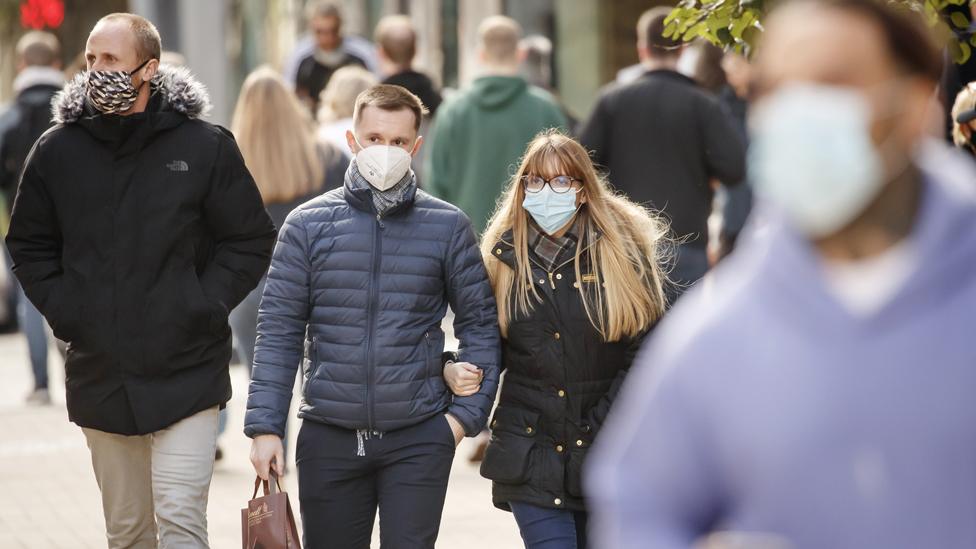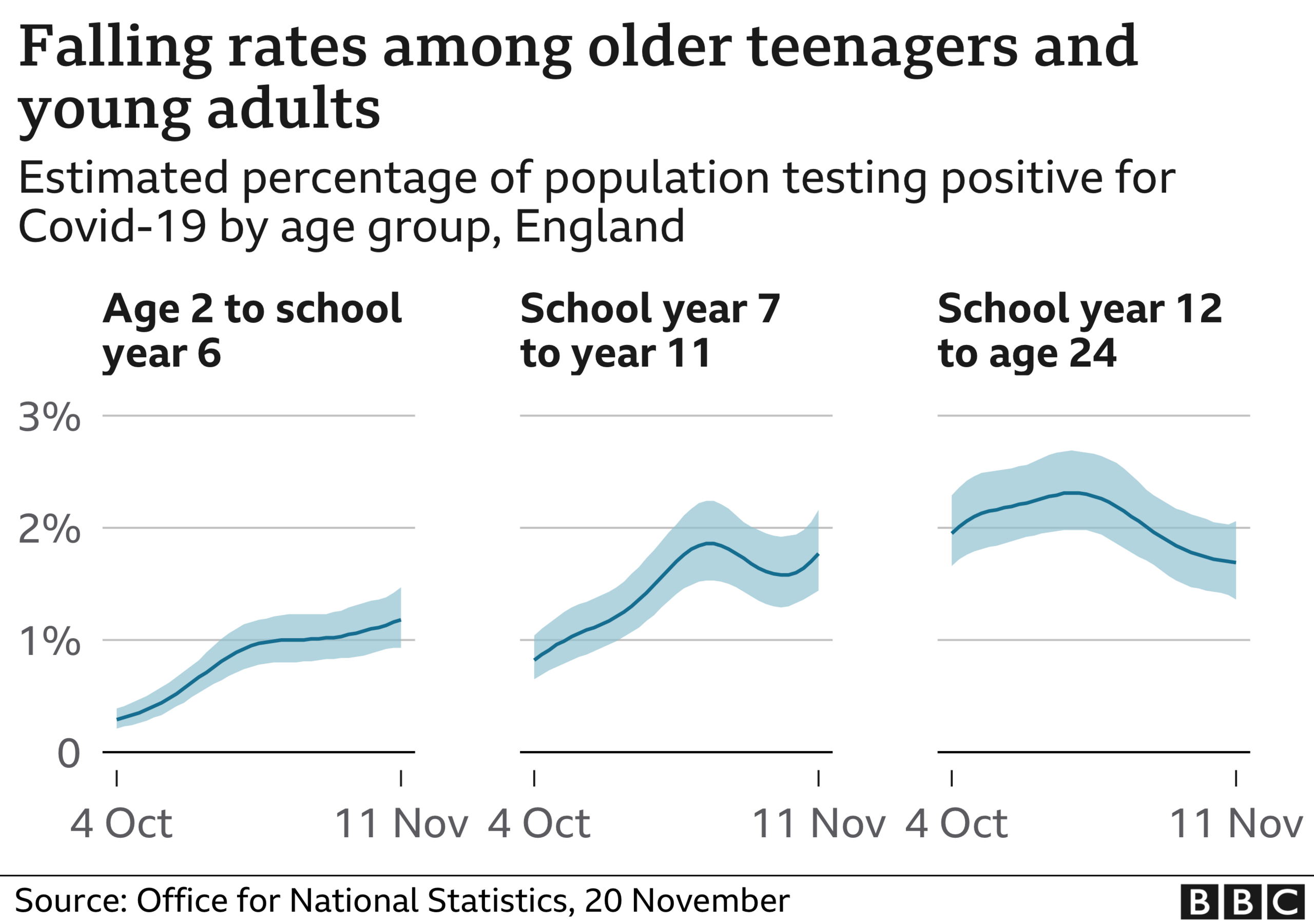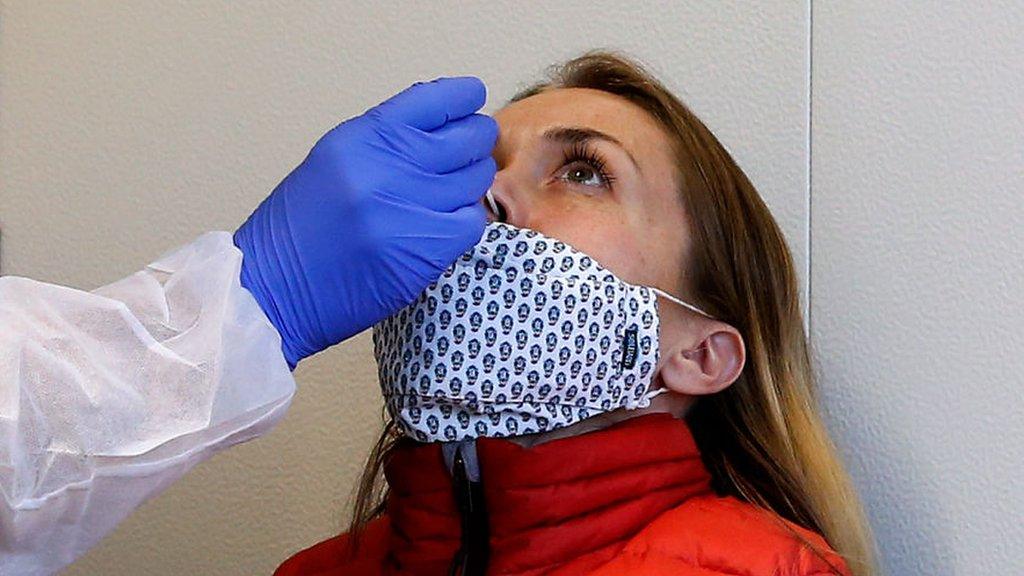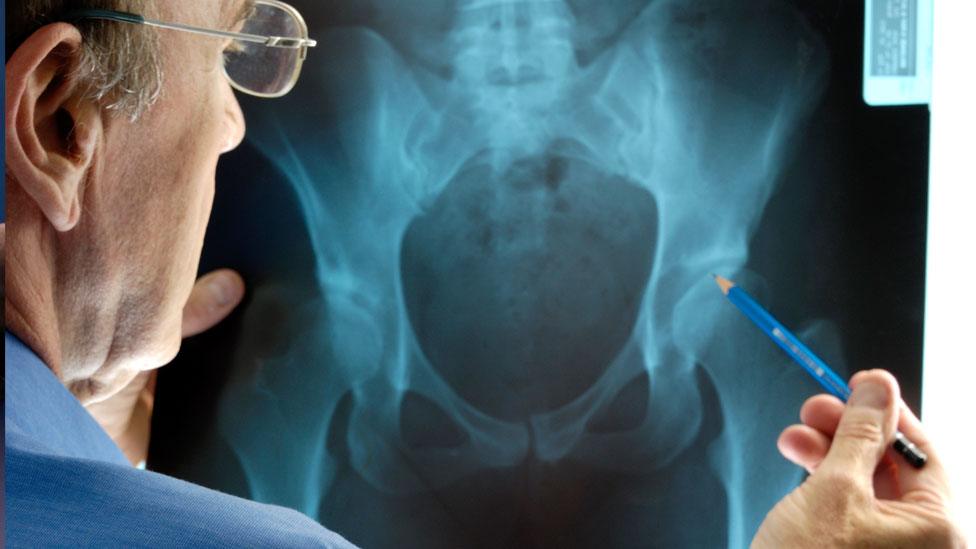Covid: Infection rates levelling off in England and Scotland
- Published
- comments

Coronavirus infection rates are levelling off in England and Scotland and decreasing in Wales and Northern Ireland, latest data from the Office for National Statistics, external (ONS) suggests.
It shows rates in school-age children are still rising while falling in young adults.
The R number for the UK continues to fall and is now between 1 and 1.1.
But that doesn't yet reflect the impact of the second lockdown in England, introduced on 5 November.
The government's scientific advisers, Sage, say the epidemic in the north-west of England is now shrinking, although infection levels in the region still remain high.
The ONS survey, which covers the week to 14 November, tests people in thousands of households across the UK, whether they have symptoms or not. It does not include people in hospitals or care homes.
It estimates that:
1 in 80 people in England have coronavirus
1 in 155 in Scotland
1 in 165 in Wales
1 in 135 in Northern Ireland
This equates to nearly 39,000 infections a day in England, down from 50,000 the previous week.
But the picture across England's regions is mixed - rates of infections are rising in London and the south-east while coming down in the north and Midlands, the ONS says.
Coronavirus vaccine: How close are you to getting one?
The highest levels of infection, meanwhile, are still in Yorkshire and the north-west.
In Wales, infection rates appear to have decreased over the past two weeks after peaking around the end of October.
In Northern Ireland, they have been going down for four weeks. In Scotland, infection rates are now stabilising after rising through most of October.

Among school-age children in England, the percentage testing positive for Covid-19 may be rising slowly while levelling off in older teenagers, young adults and the over-25s - but the ONS says the sample size is small and there is uncertainty over the estimates.
The ONS estimate of infections is usually higher than the daily lab-confirmed cases announced by the government, external and is thought to provide a more accurate picture of the epidemic.
While the government figures are based on people with symptoms requesting a test, the ONS estimates are based on swab tests on everyone in a household.
On Friday, 20,252 new positive tests were reported in the UK through the government system - down nearly 7,000 on a week ago. There have been more than 500 deaths reported every day - within 28 days of a positive test for Covid-19 - for the last four days.
The Covid symptom app, external offers another estimate. It reports around 34,000 new cases of Covid in the UK in the two weeks up to 15 November, down slightly on the previous week.
This is based on one million people reporting positive swab tests via the app.
The official R number, which estimates how many people on average one infected person passes the virus onto, is edging closer to 1. The current restrictions in place around the UK are aiming to push the R below 1, which would mean the epidemic is shrinking.
After promising results from scientists developing vaccines against Covid-19 recently, the UK nations are preparing to roll-out a vaccine to a small number of people in some priority groups in December with many more receiving a jab next year.
Pfizer, along with its partner BioNTech, has filed for emergency authorisation of its Covid vaccine in the US.
- Published6 November 2020

- Published12 November 2020
